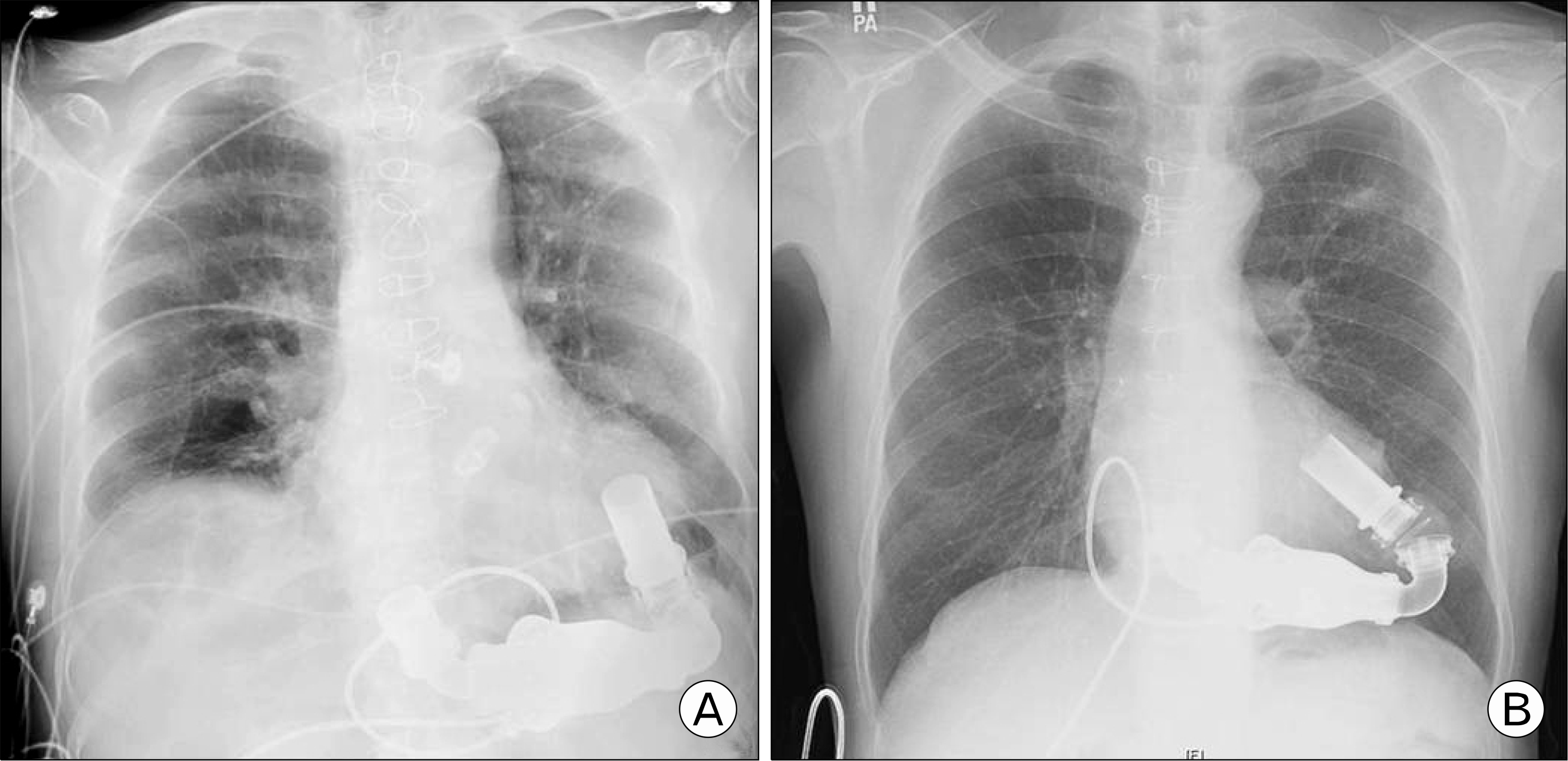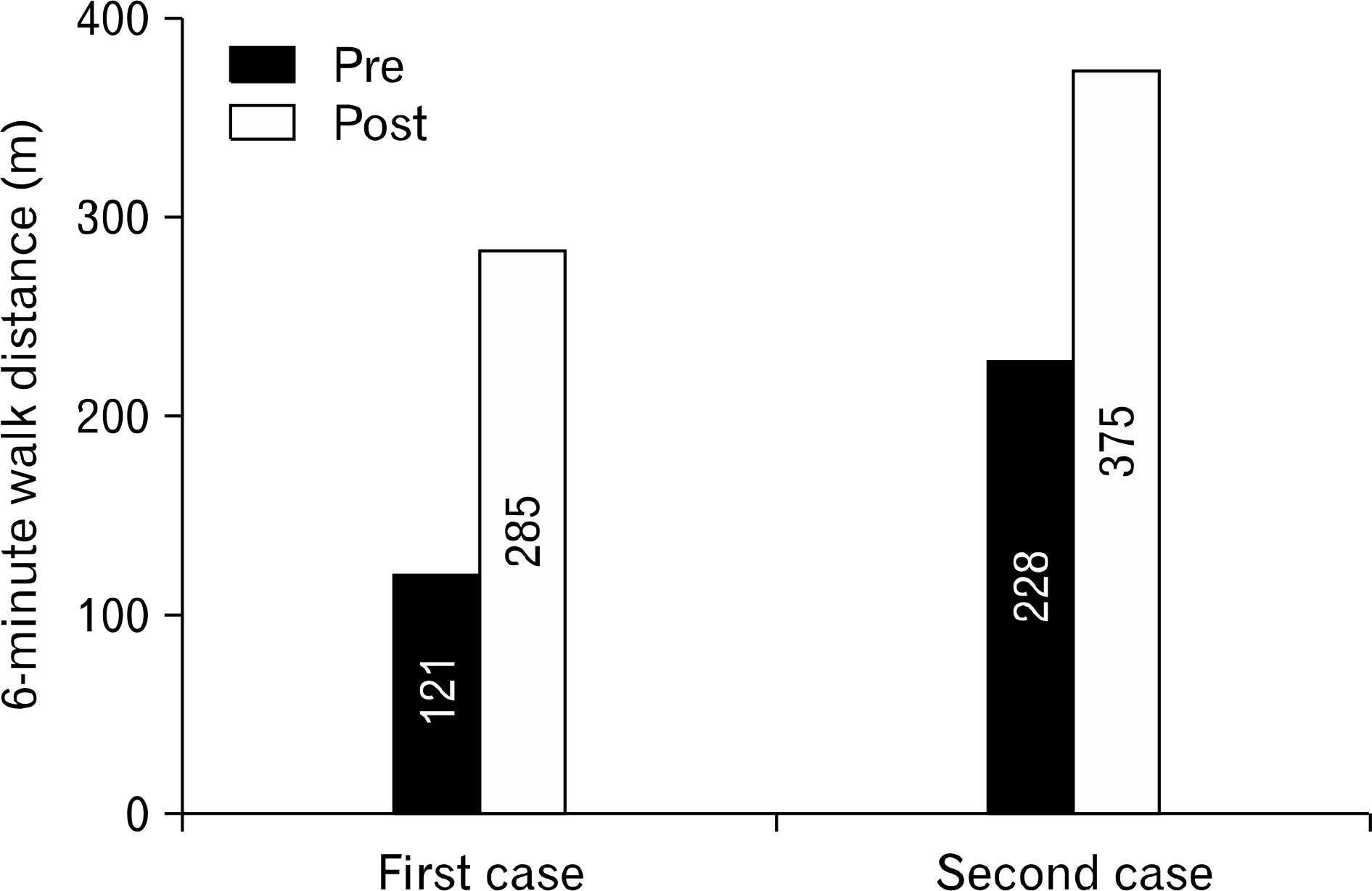Abstract
Left ventricular assist devices (LVADs) are a treatment option for patients with severe chronic heart failure. These patients are referred to an inpatient cardiac rehabilitation after implantation to improve an aerobic capacity and quality of life (QOL). Several studies have reported that an exercise therapy, which is a component of cardiac rehabilitation, improves exercise capacity and QOL. The LVADs were implanted successfully in a destination therapy in two Korean patients, and these patients were enrolled in the cardiac rehabilitation. After an individualized intervention, they were discharged from improved exercise functional capacity and QOL. This is the first report showing a benefit of the individualized exercise therapy using different parameters after LVADs implantation in Korea.
REFERENCES
1.Roger VL., Go AS., Lloyd-Jones DM, et al. Executive summary: heart disease and stroke statistics— 2012 update: a report from the American Heart Association. Circulation. 2012. 125:188–97.
2.Ministry of Health and Welfare. Ministry of health and welfare statistical year book 2013 [Internet]. Sejong (KR): Ministry of Health and Welfare; [cited 2016 May 1]. Available from:. http://stat.mohw.go.kr/front/statData/mohwAnnalsWpView.jsp?menuId=14&bbsSeq=1&nttSeq=21132&nttClsCd=01&searchKey=&searchWord=&nPage=1.
3.Slaughter MS., Rogers JG., Milano CA, et al. Advanced heart failure treated with continuous-flow left ventricular assist device. N Engl J Med. 2009. 361:2241–51.

4.Hayes K., Leet AS., Bradley SJ., Holland AE. Effects of exercise training on exercise capacity and quality of life in patients with a left ventricular assist device: a preliminary randomized controlled trial. J Heart Lung Transplant. 2012. 31:729–34.

5.Ueno A., Tomizawa Y. Cardiac rehabilitation and artificial heart devices. J Artif Organs. 2009. 12:90–7.

6.Scheiderer R., Belden C., Schwab D., Haney C., Paz J. Exercise guidelines for inpatients following ventricular assist device placement: a systematic review of the literature. Cardiopulm Phys Ther J. 2013. 24:35–42.

7.Maciver J., Ross HJ. Quality of life and left ventricular assist device support. Circulation. 2012. 126:866–74.

8.Wells CL. Physical therapist management of patients with ventricular assist devices: key considerations for the acute care physical therapist. Phys Ther. 2013. 93:266–78.

Fig. 1.
Chest X-ray view after implantation. The successful implantation of the continuous flow left ventricular assist device (HeartMate II) was showed in the figure. First case (A), second case (B).

Fig. 2.
The 6-minute walk test results for the patients (bar). There was improvement to walk distance in our cases. It means that these patients were improved exercise capacity after the intervention. Pre: pre-rehabilitation, Post: post-rehabilitation.

Fig. 3.
Minnesota Living with Heart Failure Questionnaire (MLHFQ) score was showed. All scores of post-rehabilitation (Post) were decreased that means quality of life was improved relative to pre-rehabilitation (Pre). First case (A), second case (B).

Table 1.
Demographic data for patients
Table 2.
Clinical exercise data for exercise intervention




 PDF
PDF ePub
ePub Citation
Citation Print
Print


 XML Download
XML Download